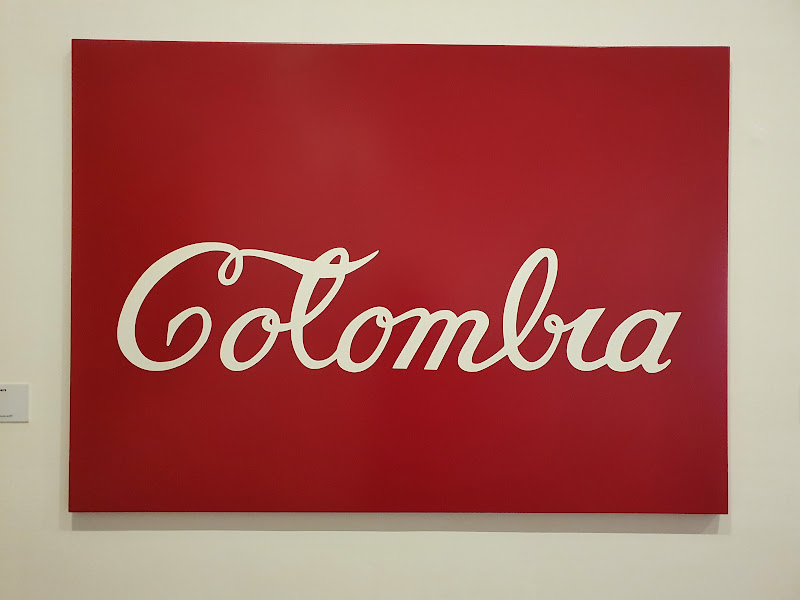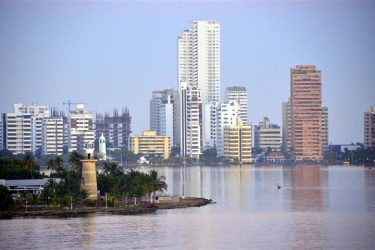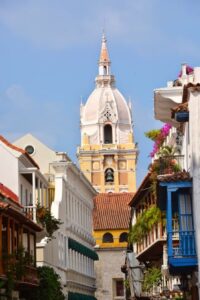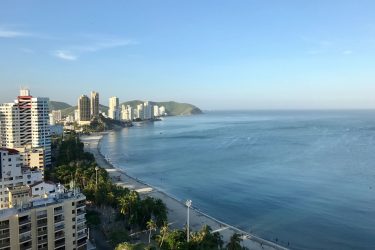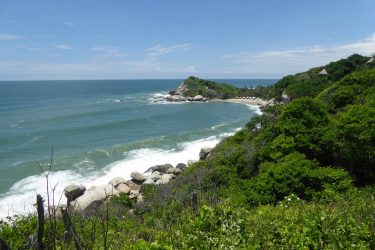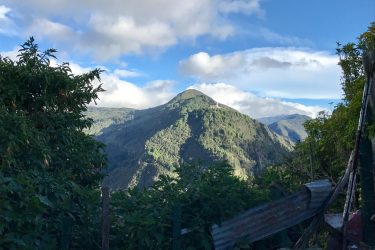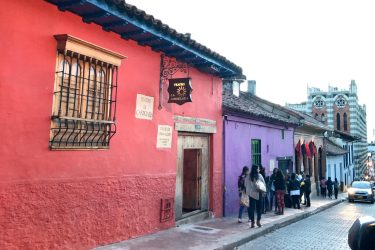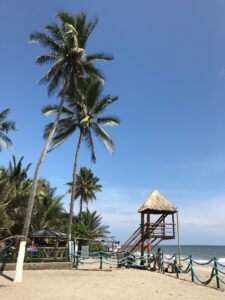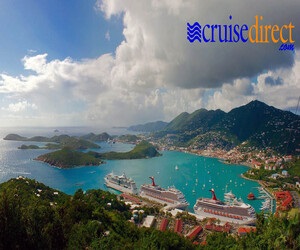Colombia is a vibrant and varied nation in South America that is renowned for its extensive history, vibrant culture, and breath-taking natural beauty. Travelling to Colombia will provide you with lifelong memories of relaxation, exploration, and adventure.
The vivid and colourful city of Cartagena, which is situated on Colombia’s Caribbean coast, is one of the country’s main tourist destinations. Cartagena is well-known for its stunning beaches and its historic old town, which is a UNESCO World Heritage Site.
The capital city of Colombia, Bogota, is another well-liked travel destination; it has a number of museums, parks, and art galleries. Visitors can enjoy delectable Colombian cuisine, take a guided tour of the city’s historic center, and visit the well-known Gold Museum.
The gorgeous Tayrona National Park, which features lovely beaches, coral reefs, and a verdant rainforest, is one of Colombia’s many natural treasures. Another well-liked location is the Cocora Valley, which is well-known for its tall wax palms and lovely hiking trails.
Visiting the dynamic city of Medellin, which has evolved from a once-dangerous city to a thriving cultural hub, is one of the most distinctive experiences in Colombia. Visitors can explore the street art scene, ride a cable car to the hillside neighbourhoods, and discover the city’s history.
Colombia is a very memorable trip because it combines history, culture, and natural beauty. In this article, we will explore what you should do and see when you visit Colombia.
Visit Cartagena, Colombia
On Colombia’s Caribbean coast is the lovely and ancient city of Cartagena. The city is renowned for its vibrant culture, ancient sites, and colourful architecture. The Castillo San Felipe de Barajas, a 17th-century stronghold, is one of several historical sites in Cartagena’s old town, or “Ciudad Vieja,” which is a UNESCO World Heritage Site.
The music, dance, and food of Cartagena all showcase the city’s colourful culture. While eating local specialties like ceviche and arepas, tourists may enjoy live music in the streets.
Cartagena is well-known for its historical sites and cultural icons, as well as its stunning beaches. Visitors can take a boat cruise to the surrounding Rosario Islands or unwind on Playa Blanca’s gentle sands.
In terms of history, culture, and natural beauty, Cartagena offers a singular and remarkable experience. Visitors to Cartagena are bound to fall in love with the vivid character of the city, whether they choose to stroll through the old town’s colorful streets or unwind on the beach.
Tayrona National Park
The breath-taking Tayrona National Park is a protected area found close to Santa Marta in Colombia’s Caribbean region. The park is home to a wide variety of species and is renowned for its stunning beaches, coral reefs, and lush rainforest.
The numerous hiking routes in Tayrona National Park wind through the rain forest and lead to isolated beaches and breath-taking coastline vistas. A number of indigenous tribes may be found in the park, providing a fascinating look into Colombia’s diverse cultural past.
Cabo San Juan, a stunning beach framed by soaring palm palms and crystal-clear waves, is one of the most well-known locations in Tayrona National Park. The neighbouring trails can be explored, or visitors can unwind on the beach or go swimming in the sea.
A mix of natural beauty and cultural legacy can be found in Tayrona National Park, making it a special and outstanding vacation spot. Visitors to Tayrona National Park are bound to fall in love with its breathtaking scenery and rich culture, whether they choose to explore the jungle or unwind on the beach.
San Agustin Archaeological Park
In Colombia’s southwest, San Agustin Archaeological Park is a UNESCO World Heritage Site. The park is renowned for its magnificent collection of historic stone statues that date back more than 2,000 years and were made by the native people who once resided in the area.
Intricate carvings and sculptures that have been preserved in the park’s numerous tombs and burial sites can be admired by visitors as they walk along one of the park’s many trails. The park is also home to a number of large waterfalls, which offer visitors a stunning backdrop.
Travellers at San Agustin Archaeological Park, a special and remarkable place, can have an insight into Colombia’s rich history and cultural legacy. Visitors to San Agustin Archaeological Park are certain to be enthralled by the park’s incredible collection of historic artefacts and natural wonders, whether they choose to explore the ancient statues or take in the natural beauty of the surrounding area.
Visit Medellin
The center of Colombia’s Andean region is home to the dynamic and contemporary metropolis of Medellin. The city attracts tourists from all over the world because of its stunning architecture, vibrant nightlife, and welcoming residents.
Visitor attractions in Medellin include the Botero Plaza, which has a collection of sculptures by well-known Colombian artist Fernando Botero, as well as other museums, parks, and other cultural attractions. The city’s cable car system offers beautiful panoramic views of the city and its surrounds and offers a distinctive method to observe the nearby mountains and neighbourhoods.
The nightlife in Medellin, which includes a variety of hip pubs, clubs, and restaurants, is one of the city’s most well-liked attractions. The city is also home to a number of vibrant markets where tourists may find a selection of regional crafts, apparel, and food.
Medellin is a fascinating city with a unique fusion of tradition, culture, and modernity. For everyone visiting Colombia, Medellin is a must-visit city because of its magnificent architecture, exciting nightlife, and welcoming residents.
La Catedral de Sal
The Salt Cathedral, also known as La Catedral de Sal, is an extraordinary chapel that can be seen in the Colombian town of Zipaquirá, not far from Bogotá. The church, which was erected inside a defunct salt mine, is a well-liked tourist attraction due to its exquisite architecture and sophisticated design.
Visitors at La Catedral de Sal are welcome to explore the spectacular halls and chambers of the underground church. The 590-foot tunnel that takes visitors through a set of 14 stations that stand in for the stations of the cross is the church’s most well-known feature.
The Salt Cathedral is a prominent religious landmark that draws visitors from all over the world in addition to being a gorgeous architectural marvel. The church offers a singular and remarkable experience of history, religion, and natural grandeur, making it a must-see site for anybody visiting Colombia.
Lost City, or Ciudad Perdida
An ancient archaeological site called Lost City, or Ciudad Perdida, can be found in Colombia’s Sierra Nevada mountains. It was first uncovered in the 1970s and is thought to have been constructed around 800 AD by the Tayrona culture. Only by travelling through dense jungle, through rivers and streams, and up steep mountain slopes is it possible to reach the location.
Explore the ancient terraces, stairways, and plaza ruins in Lost City to learn more about the history and culture of the Tayrona civilization. Travellers who are daring and want to discover Colombia’s less-travelled regions frequently choose Lost City as their destination because of the site’s secluded location and difficult access.
The ideal way to visit Lost City is with a knowledgeable guide who can share insights into the site’s history and significance. Visiting Lost City demands a reasonable level of fitness and stamina. Lost City is a must-visit location for anybody travelling through Colombia because of its distinctive combination of adventure, history, and natural beauty.
Visit the Coffee Region in Columbia
The Coffee Region, or Eje Cafetero, is a breathtakingly gorgeous region in the center of Colombia famed for its rich history, culture, and coffee, obviously. Numerous coffee farms can be found in the area, which produce some of the best coffee in the world and give tourists the chance to learn about the cultivation, harvesting, roasting, and brewing of coffee.
The area is recognised for its coffee as well as its beautiful mountain scenery, thriving cities, and quaint colonial villages like Salento, Filandia, and Jardn that provide tourists a glimpse into Colombia’s rich history and culture.
Visitor attractions in the Coffee Region include the Otn Quimbaya Wildlife Sanctuary, which protects a number of endangered species, and the Cocora Valley, which is home to the tall wax palm trees.
The Coffee Region is a must-visit location for anybody visiting Colombia due to its breath-taking natural beauty, rich history, and culture, as well as its delectable coffee.
Visit Bogota, Columbia
Colombia’s main city, Bogota, is 2,600 meters above sea level and situated in the Andes highlands. It is a thriving metropolis renowned for its extensive history, vibrant culture, and cutting-edge services.
Visitors to Bogota can tour the city’s several museums, including the Botero Museum, which highlights the works of renowned Colombian artist Fernando Botero, and the Gold Museum, which displays the nation’s pre-Colombian origins. They can also go to the ancient La Candelaria neighbourhood, which has churches and structures from the colonial era.
The culinary scene in Bogota is also growing, with a variety of eateries providing both local specialties and cuisine from around the world. Additionally, the city’s numerous markets and malls provide countless opportunities for discovering one-of-a-kind gifts and souvenirs for shoppers.
For everyone visiting Colombia, Bogota is a must-visit city because of its blend of history, culture, and contemporary conveniences.
Visit Cocora Valley in Columbia
In the center of Colombia’s coffee region is the breathtakingly stunning valley known as the Cocora Valley. It is home to the tall wax palm trees, which are a national symbol of Colombia and can grow to heights of up to 60 metres.
The rich terrain of the Cocora Valley can be explored on foot or on horseback, allowing visitors to take in the breath-taking scenery and the crisp mountain air. Visitors can select a path that suits their level of fitness and expertise from among the many hiking trails that are available across the valley, ranging from easy to challenging.
The Cocora Valley is home to a variety of animals, including hummingbirds, toucans, and the endangered Andean condor, in addition to its stunning natural surroundings. The numerous coffee plantations spread out over the valley offer visitors the chance to learn more about the process of making coffee.
Overall, the Cocora Valley is a must-see location for anybody visiting Colombia’s coffee region since it provides a distinctive fusion of outdoor activity, cultural legacy, and natural beauty.
Columbia’s Beaches
Some of the most stunning beaches in the world may be found on Colombia’s Caribbean and Pacific shores. There is something for everyone, from the Caribbean’s pristine sand beaches and pure turquoise waters to the Pacific’s wild and rugged coastline.
Playa Blanca near Cartagena, which has white sand beaches and crystal blue waters, and Tayrona National Park, which offers a spectacular blend of tropical rainforest and pristine beaches, are two of the most well-known beaches on Colombia’s Caribbean coast.
Visitors can take in the laid-back atmosphere of locations on the Pacific coast like Bahia Solano, which provides excellent surfing and whale watching possibilities, and Nuqui, which is renowned for its black sand beaches and lush vegetation.
Colombia’s beaches have something to offer everyone, whether you are searching for a leisurely beach getaway or an action-packed holiday. So grab your sunscreen and head to the seaside to take in the stunning scenery and fascinating culture of this amazing nation.
Festivals in Columbia
Colombia, a nation renowned for its vibrant cultural diversity and love of festivities, hosts a wide variety of festivals all year long, each of which provides a distinctive window into the country’s history and customs.
One of the biggest carnivals in the world, the Barranquilla Carnival is arguably the most well-known event in Colombia. A wild celebration of music, dance, and colourful costumes captures the jubilant spirit of the Caribbean coast.
The Medelln Flower Festival, or Feria de las Flores, celebrates flowers and displays stunning floral arrangements while displaying Colombia’s great biodiversity. It demonstrates how much the nation values gardening and the outdoors.
The Bogota International Book Fair, which hosts debates, book releases, and cultural events to support reading and education, attracts book lovers and literary enthusiasts from all over the world.
The Carnaval de Negros y Blancos, also known as the Carnival of Blacks and Whites in Pasto, is a vibrant celebration that combines pre-Columbian and Afro-Colombian traditions through song, dancing, and intricate body painting.
The religious traditions of Colombia are also strongly reflected in its festivals. Cities like Popayán and Mompox are famous for the seriousness and creative displays of their Holy Week processions, which signify a period of introspection and devotion.
With a mesmerizing fusion of music, dance, art, and spirituality, which welcomes both locals and visitors to join in the celebration of life, these festivals in Colombia, serve as a tribute to the nation’s rich cultural legacy.



